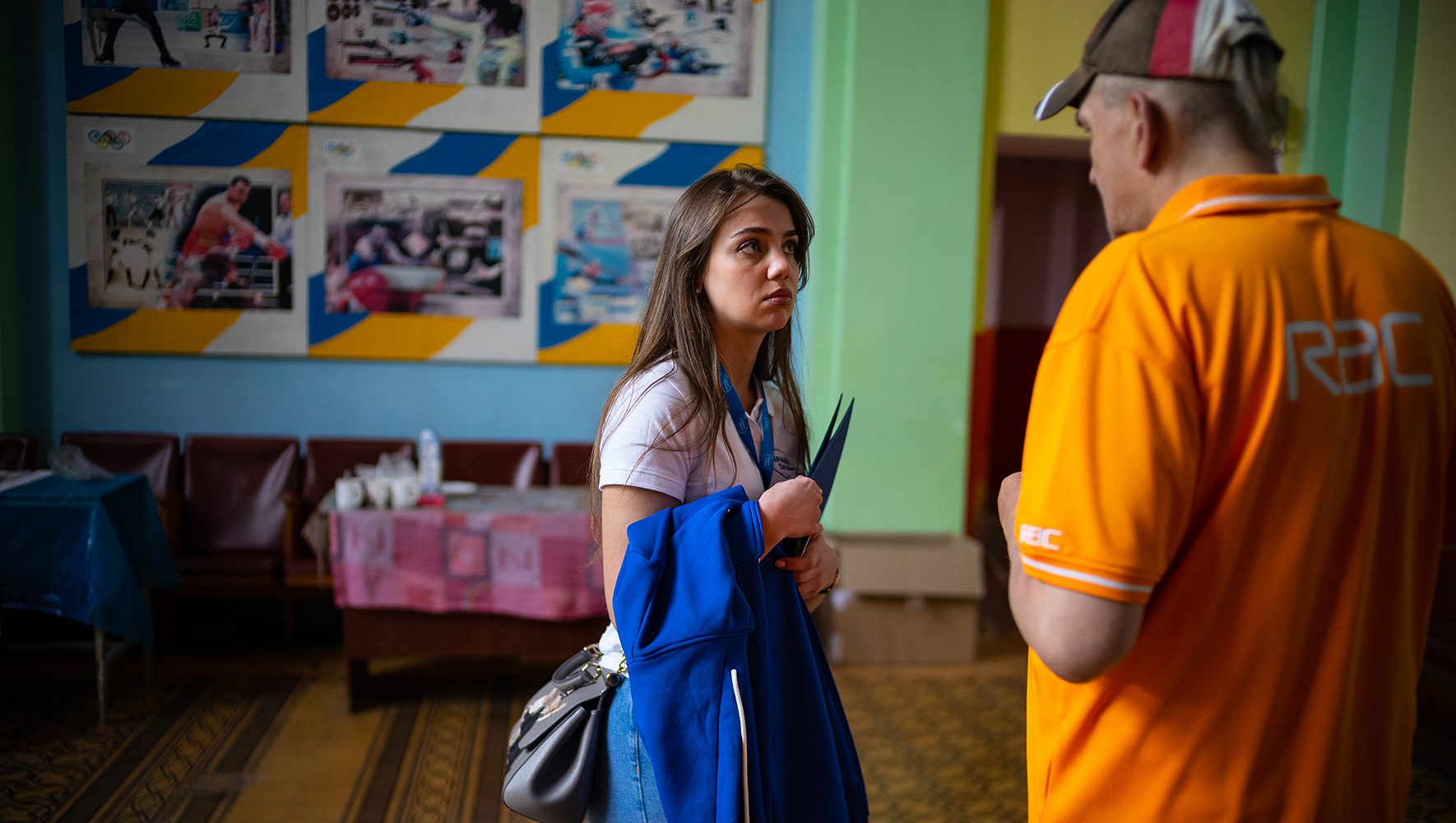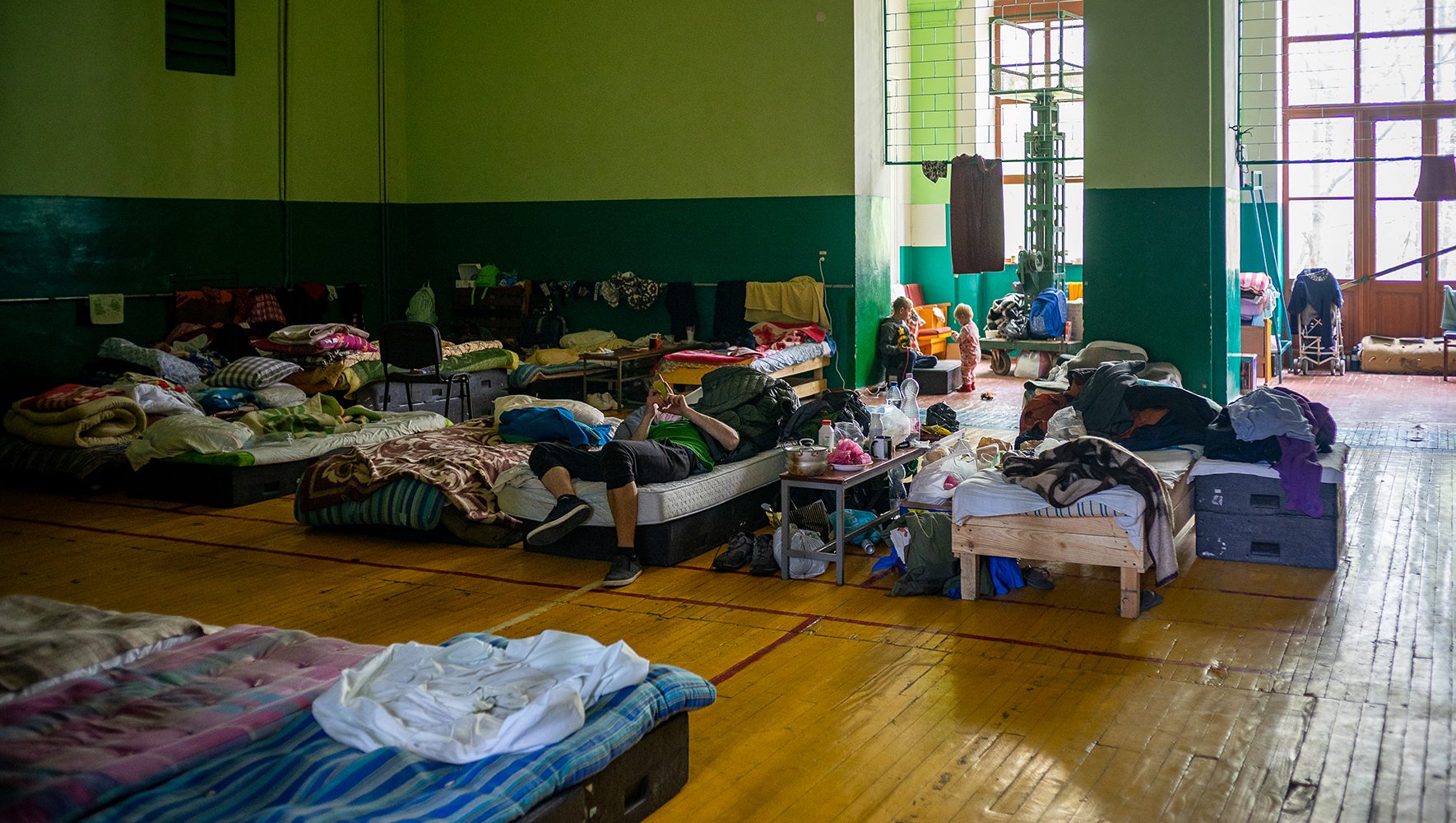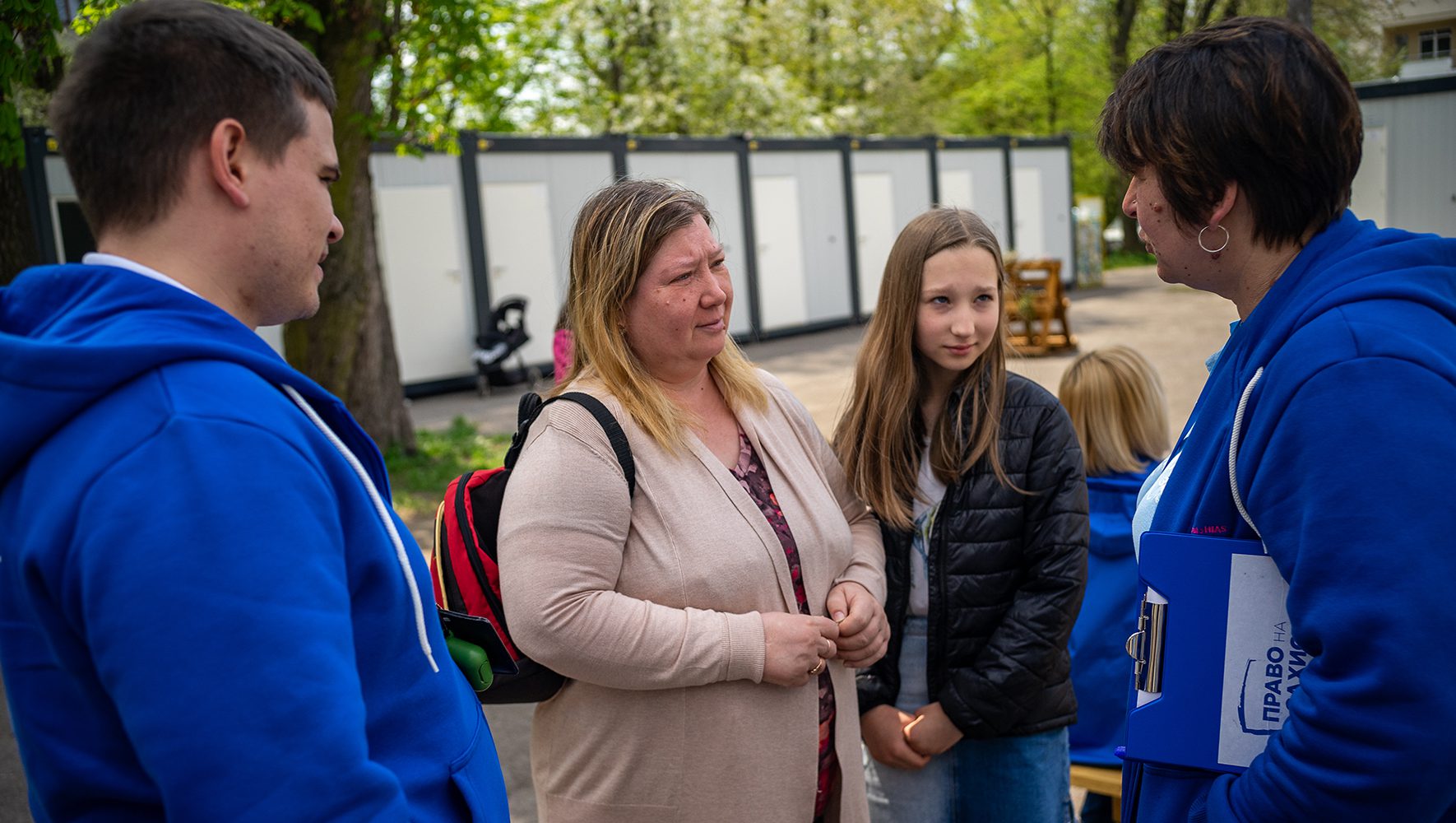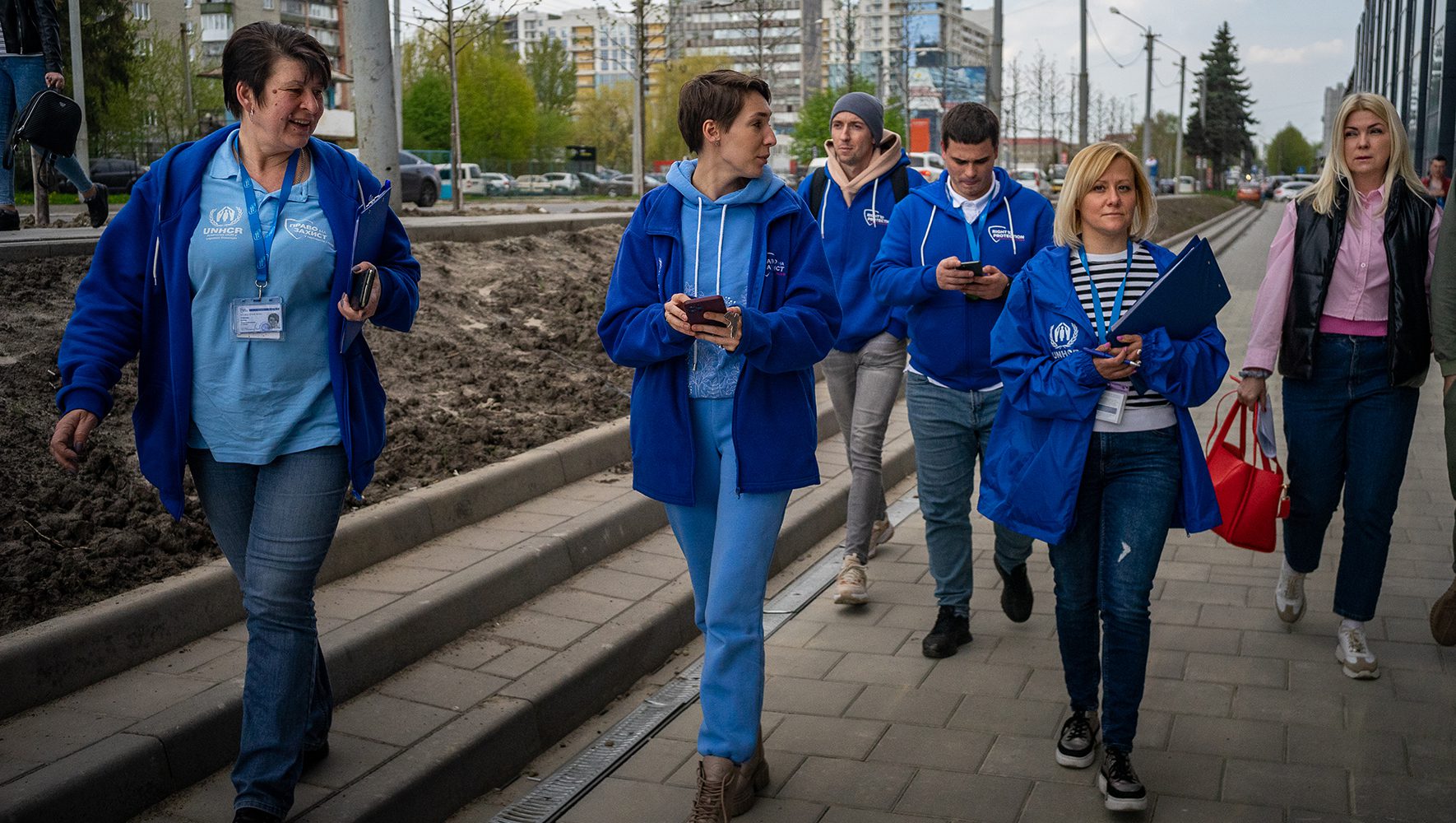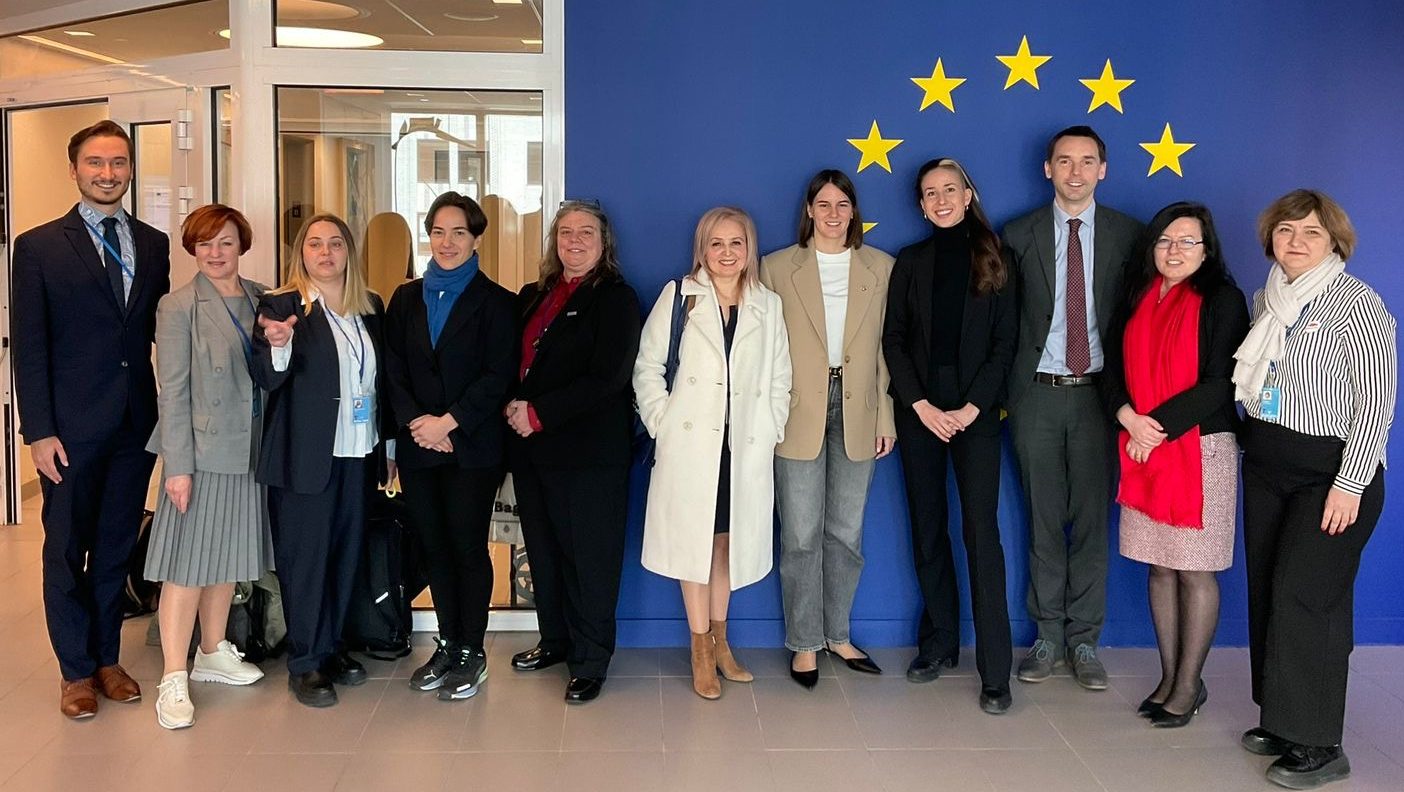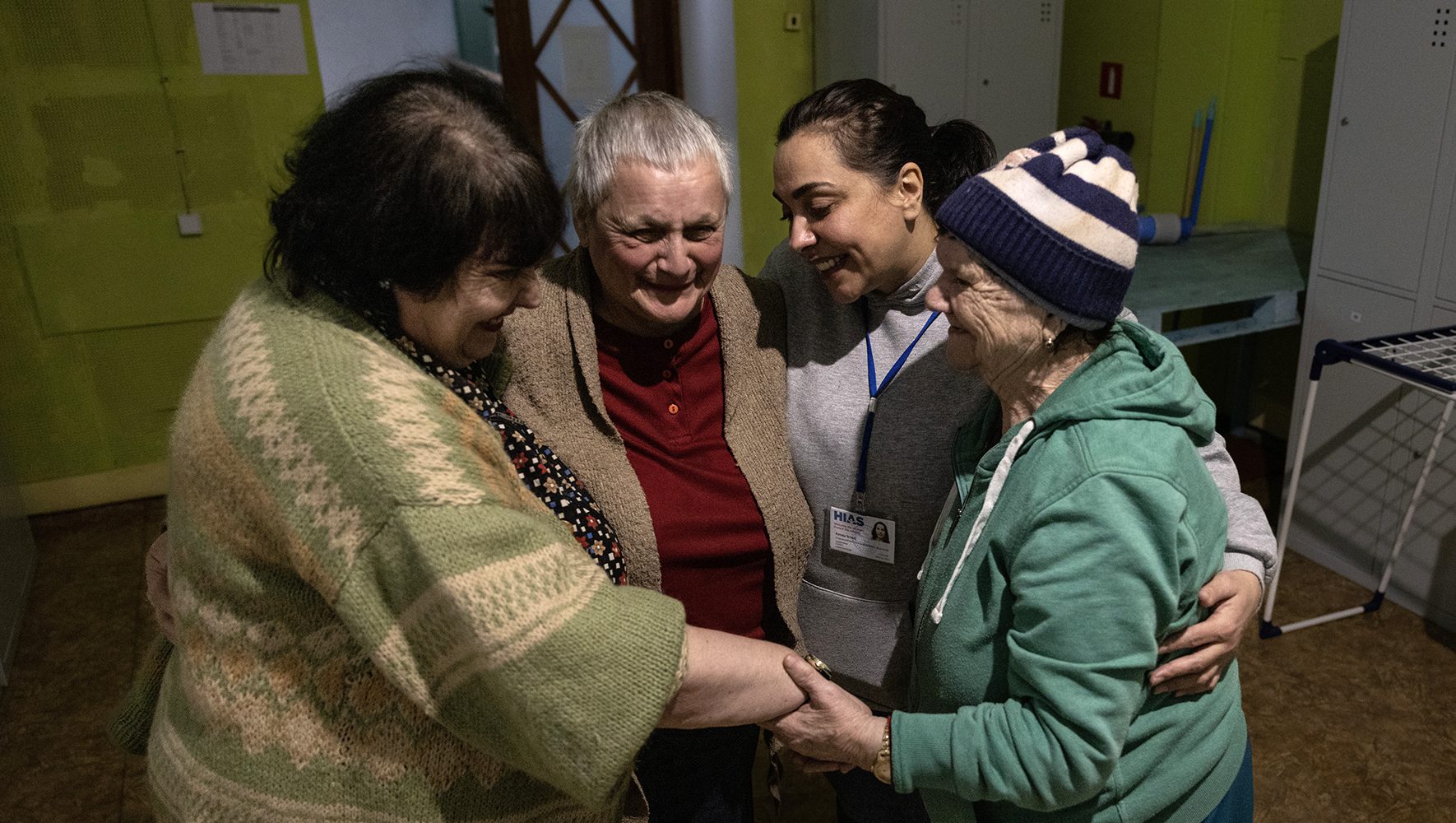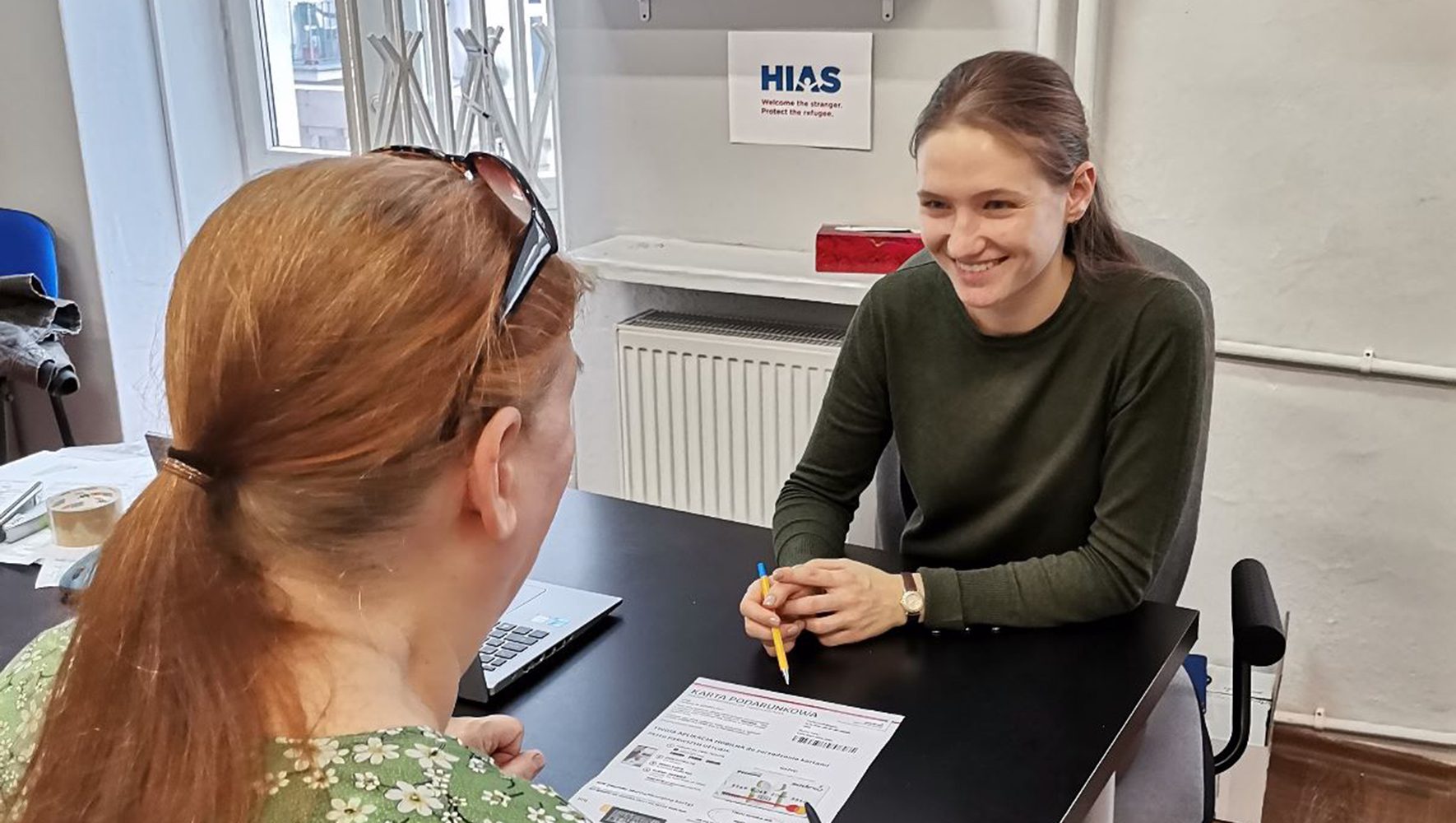Right to Protection’s Quick Pivot to a War Footing
By Alan Chin
For HIAS.org
Jun 28, 2022
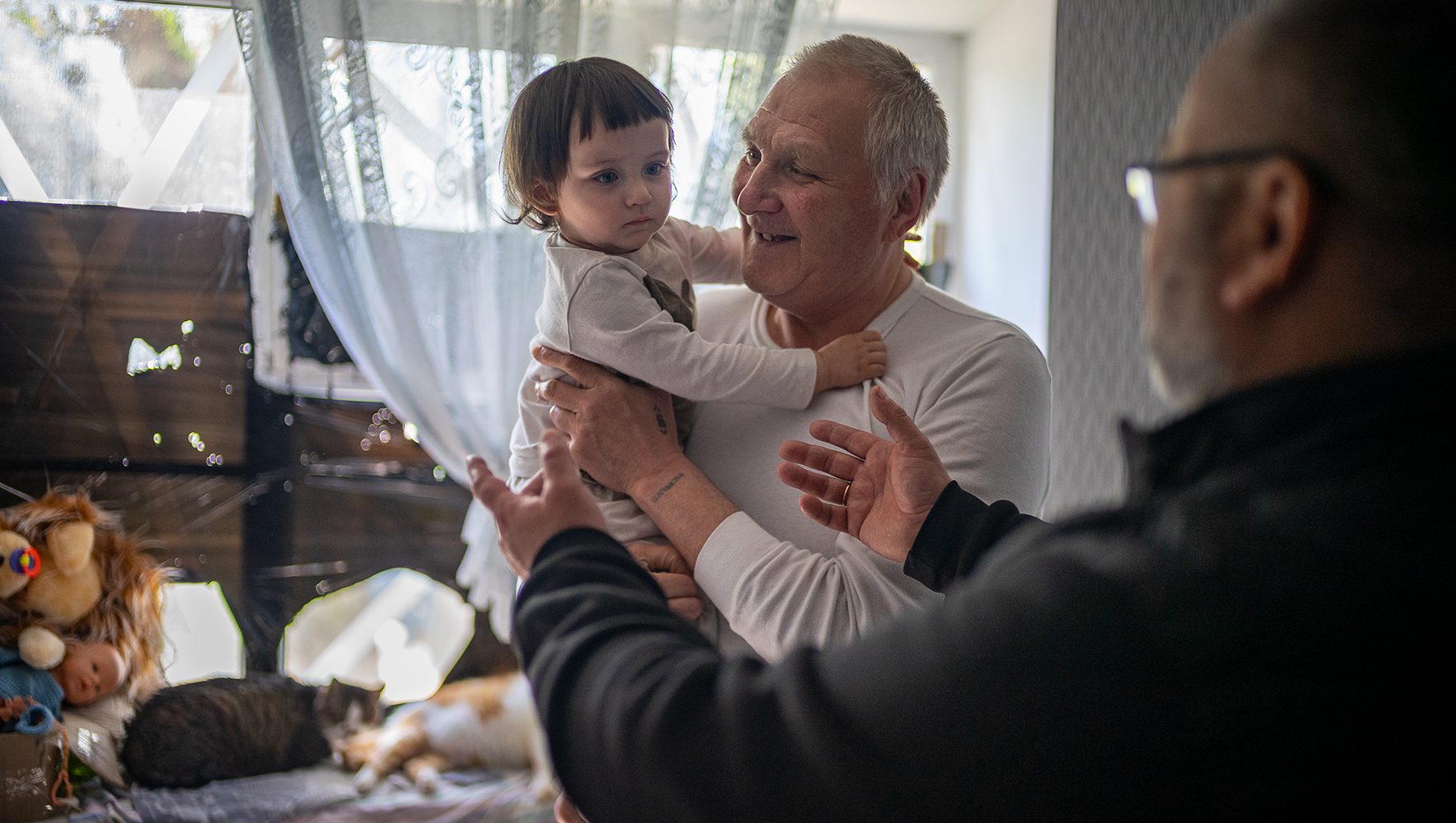
R2P helps people like Anatoly and his granddaughter (from Kostyantynivka in Donetsk Oblast) who are among hundreds of displaced people staying at a technical college in Vinnytsia, Ukraine. (Alan Chin for HIAS)
“I woke up at 5:30 a.m. and started calling colleagues,” Alexander (Sasha) Galkin recalled of the first night of the war. Like so many Ukrainians woken on February 24 by Russian bombs and missiles exploding near his home in Kyiv, he rushed to make sure he had extra water and food. But, as the director of Right to Protection (R2P) — HIAS’ long-time partner in Ukraine — he also had urgent priorities: ensuring the safety of R2P staff, and working out how the organization could pivot to the new emergency. He immediately started organizing staff evacuations from the R2P offices in Mariupol, Severodonetsk, Kharkiv, and other cities that were under attack.
Some R2P staff endured harrowing ordeals, including having to escape through Russia itself and then third countries such as Finland. Others remained in their homes and were overrun by the invading Russian forces; since then communication with them has been sporadic. To support staff who became displaced just like those Internally Displaced Persons (IDPs) they were trying to help, R2P provided funding for staffers’ temporary accommodations and travel costs.
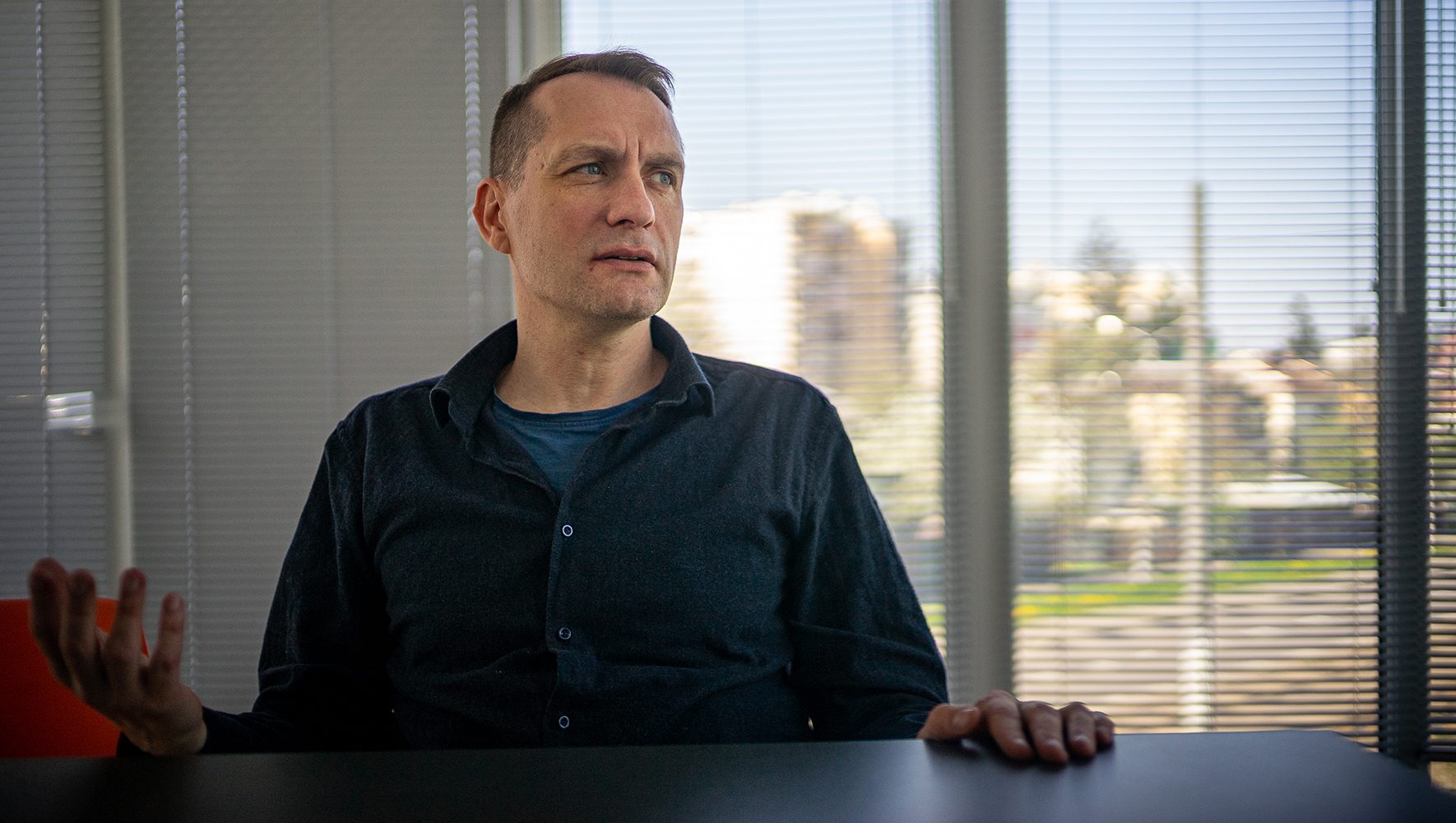
Aleksandr “Sasha” Galkin, director of Right to Protection (R2P), at their new office in Lviv (Alan Chin for HIAS)
Although tensions had ratcheted up before the Russian invasion of Ukraine started, even President Zelensky hadn’t publicly imagined a massive countrywide assault. Galkin and his staff had discussed several scenarios of what could happen, but he admitted they had seriously considered only less major outcomes. “Nobody thought that such a scale was possible. The UN wasn’t planning for evacuations. We had to solve it on our own.” Nonetheless, they had started planning for a larger crisis. “We discussed what to do with HIAS a month and a half before and ordered satellite telephones. But they hadn’t arrived yet.”
Galkin and his team quickly formulated both short and medium term responses to deliver practical aid to hundreds of thousands of people. Their new mission, as stated on R2P’s website, which was taken down by a massive cyberattack the day before the war started and took a week to restore, is to help “people who have suffered as a result of the war in Ukraine.” In the immediate term, R2P is implementing a direct cash distribution program that gives recipients three months of modest funding, no questions asked, to cover needs that in-kind donations can’t. As well as helping the displaced, it brings them into conversation with those from R2P who can provide further support.
Also for immediate relief, R2P established a phone hotline to provide both useful information and psychological counseling in the face of the mass confusion and stress of war. As a further measure to provide connective social tissue in a society that has been ripped apart, R2P staffers regularly visit temporary housing dormitories, to assess needs and be a visible presence offering reassurance to IDPs. Finally, R2P has continued its prewar programs helping stateless persons and assisting existing IDPs – replacing lost or destroyed documents and navigating social services.

Victoria Stepanuk is living in temporary housing for IDPs, after fleeing fighting in Luhansk Oblast with her daughter and grand-daughter. (Alan Chin for HIAS)
“I stayed in Kyiv until mid-March,” Galkin said, “but it became clear that it was necessary to start an office in Lviv.” Close to Poland, it is one of the safest cities in Ukraine, and more than 150,000 displaced people have swollen the population to almost a million. Millions more have transited through on their way abroad. Occasional airstrikes have killed and wounded people, but not on the horrific scale inflicted on cities and regions closer to front lines and within range of Russian artillery. For the same reasons, other R2P offices have also been opened in the cities and towns of central and western Ukraine where people have sought refuge away from their battered homes in the east and south. The staff size has more than doubled since those explosions on February 24. Up from 160 before the war, R2P now numbers 370 plus additional short-term contract workers — all facing the desperate demand for refugee services.
A Game of Telephone
Olena Hrekova, the Team Leader for the new Lviv office was herself relocated from the Donbas and said that R2P’s outreach was essential because “it’s like a game of telephone with so many rumors. We have to ask IDPs a lot of questions to figure out what they need.” When Hrekova and her team visited a hastily constructed encampment of modular housing units in a Lviv city park, an older woman asked her, “when will the war end?” before getting to the practical question she had about problems she was having with her cash assistance application. Another woman with a disabled husband said that her ID documents were inadequate and so had been denied humanitarian aid from a local volunteer organization. A pregnant woman told R2P staffer Nataliya Zyhula that their modular housing units were too cold, and that she needed more maternity care.
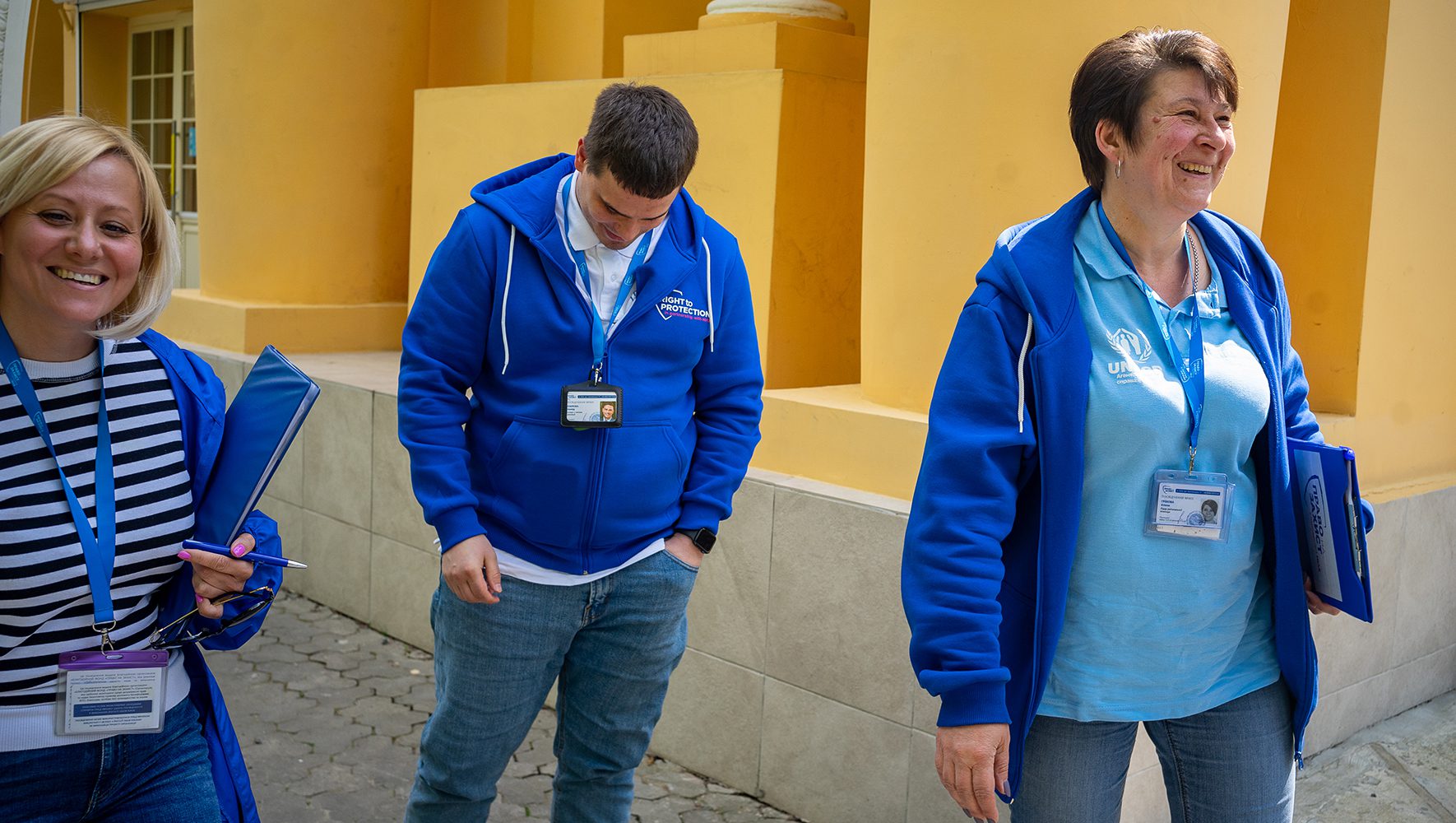
Nataliya Zyhula (left) an R2P staffer, and Olena Hrekova, Team Leader of the Lviv Regional Office, visit temporary housing for IDPs. (Alan Chin for HIAS)
Olessa Fedovova fled the fighting in the port city of Mykolaiv and was sleeping with her two children in a makeshift dormitory that had been set up in a Lviv school gym, with the disused basketball hoops above them and their laundry hanging up to dry on the window grills. “I want to jump out of the window,” she said, “but I’m trying to stay optimistic.” Her 11-year-old daughter Ksenia explained to R2P staffer Irina Hetto how they had had to shelter from the bombardments in their basement and take care of a newborn kitten. Fedovova added, “we want to leave the country, but we don’t have passports – and how do we take our pets? How do we get to Germany?”
With over 160 people staying in the gym and school and limited privacy, it was clear that the thus far ample supplies of donated food and clothing weren’t the only needs. R2P staffer Galina Padalko said, “there’s often reluctance to accept psychological help because there’s still stigma attached to that, but psychological support is as important as cash aid. They want me to ask them what happened to them.” The displacement of 12 million Ukrainians by the Russian invasion, along with the disruption and breaking up of families and communities, has inflicted an immense toll. As in so many cases of trauma, sharing and telling the stories of those traumas can help purge the mental burdens and rebuild social bonds.
Representing the Stateless
Despite the urgent need to respond to the emergency of invasion and full-scale war, R2P’s longstanding existing programs had to be maintained, because since 2014, Russia’s incursions into the Donbas and Crimea regions had already created over 700,000 IDPs. Oleksandra Aivazian is a Kyiv-based R2P lawyer working on legal assistance for stateless people in Ukraine. Before February 24, there were officially 35,000 stateless persons in the country. Aivazian explained that there were probably many more.

Oleksandra Aivazian is a lawyer working with R2P’s Legal Assistance to Stateless Persons Project. (Alan Chin for HIAS)
“They exist but nobody knows about them,” is how Aivazian described what it means to be stateless. People without identity documents include many who, even 30 years after the end of the Soviet Union are still trying to straighten out their successor nationality along with members of the Roma minority, who are traditionally nomadic across national borders, as well as former residents of the Donetsk and Luhansk regions who had fled since 2014 from Russian-controlled areas and no longer had access to their government records.
Some clients “lived in small villages their whole lives,” Aivazian explained, “so they didn’t need papers. But problems arise if they need social assistance or if the police stop them.” With many of their cases, Aivazian said, “the situation has collapsed because we no longer have diplomatic relations with Russia and Belarus. They can’t even get their birth certificates now. Before, there were agreements about birth certificates: lawyers could go to any registry and get duplicates.”
Depending on the case, those procedures normally took many months if not years to resolve, and wartime has exacerbated difficulties for stateless persons, Aivazian said. “The State Migration Service’s procedures don’t work normally. In Berdyansk [occupied by the Russian army], we had a client who is a 79-year-old woman originally from Georgia. In February she finally got her ID and residency, and we wanted to get her a passport so she could go to Georgia. But with the war that’s been delayed, and we don’t know if she’s still alive, because we haven’t been able to contact her since the beginning of April.”
Another client in the Sumy region that came under heavy Russian attack has two small children. “She didn’t leave because she was afraid to cross checkpoints without documents. I explained that she can cross them, and that NGOs can help them with medical care and help them get on evacuation trains. But she still didn’t know whether to stay or go. It’s a frightening situation for a lot of people because anything can happen.”
“Without documents, you can’t work,” Aivazian continued, “or receive medical care. When they get an ID, it’s impossible to explain the happiness in their eyes because it’s the first day they can live like an average Ukrainian.”
Making Sure People Don’t Fall Through the Cracks
R2P is also planning pilot programs for grants to small businesses and to support hiring of IDPs in their new locations, because, Sasha Galkin said, “it’s the proper time to boost the economy, otherwise there will be a full collapse.” With so many people displaced and impacted by the war, he explained how R2P chooses which people to help: “We target the very vulnerable. Those who fall between the cracks.”


